What is Functional Information? A Philosophical Investigation
Sections
1. Preface - Signal or Noise?
2. How Do We Define "Information"?
3. From Switches to Claude - the Binary Foundations of Modern Technology
Preface: Signal or Noise?
Whenever I ride my motorcycle or drive through a busy Indian street, I know that I will, at some point, find myself surrounded by a cacophony of sound.
I will find myself amidst a shifting vibrational field, of sonic signals. Each peep, blare, ping, and beeeeeeeeep, each one intentionally broadcasted by an human being, through the medium of their automobile horn.
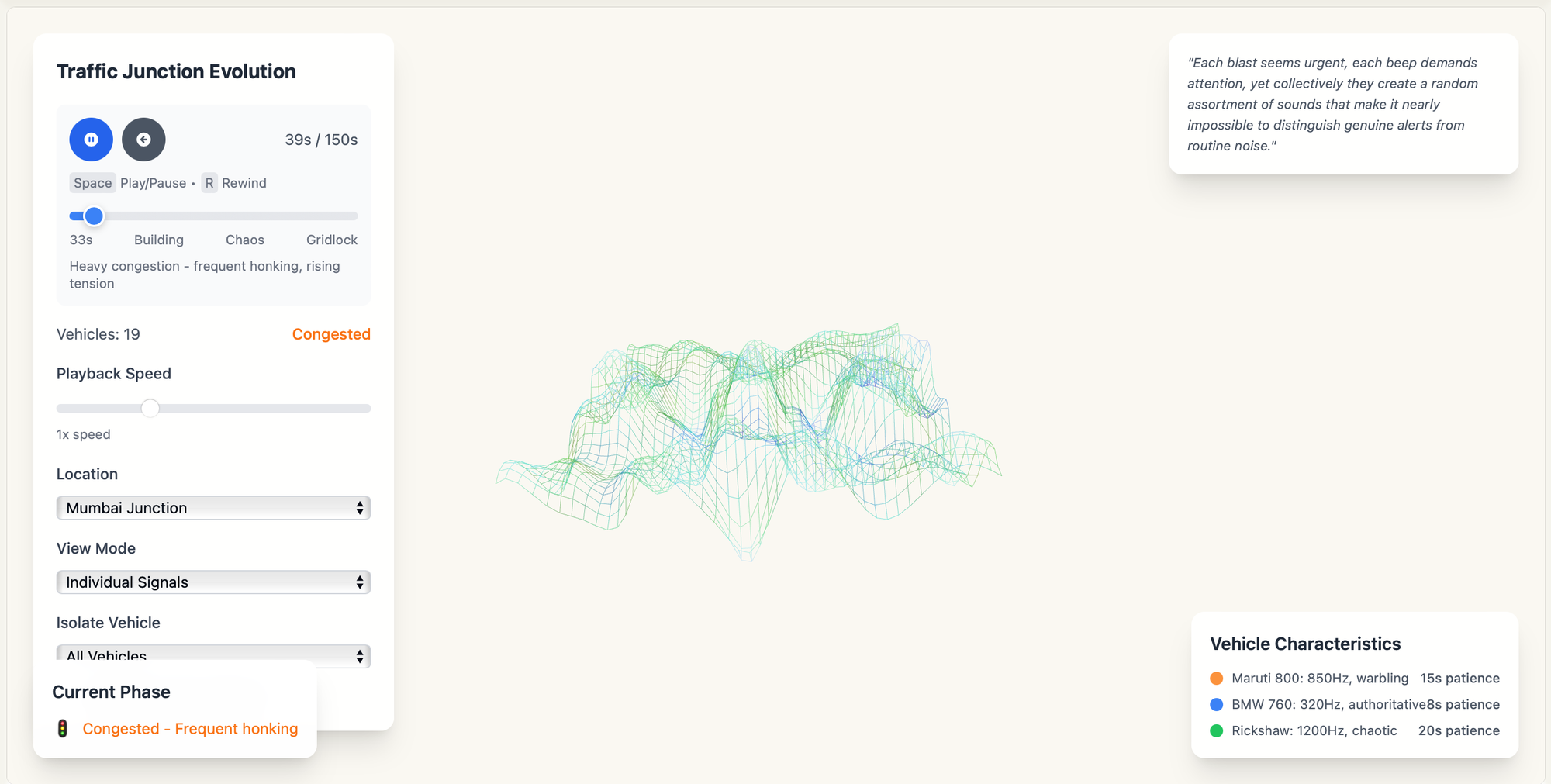
When I'm in Mumbai, the honks are produced by cars comprising the entire of range the automotive spectrum – strained, indefatigable Maruti 800s warbling like swans being throttled; authoritative, deafening, brand-new BMS 760s that sound like passenger ferries approaching a fog-swathed Tower Bridge; whatever rickshaws are.
When I'm in Goa, this shifting vibrational field mostly comprises nasal bleeps from two-wheelers – new electrics from Aether and Ola, random Classic Enfield souped-up to raise the decibel level.
In its totality, this sonic information is inscrutable. Am I in danger or not?
What does a short bleep mean? A long one? Do these signals convey information – about risk, about the emotional state of the person behind the horn? Each blast seems urgent, each beep demands attention, yet collectively they create a random assortment of sounds that make it nearly impossible to distinguish genuine alerts from routine noise.
Are Indian streets full of 'boys (inadvertently) crying wolf?'
Does the global Internet have the same tendencies?
My experiences on Indian roads, surfing Indian websites, and exploring Silicon-valley social media platforms crystallized a question that had been growing in my mind about our contemporary information environment: When does a signal become noise? More precisely, when does information cease to inform?
I realized I was experiencing in microcosm what many of us face daily in our digital lives - an endless stream of signals, alerts, updates, and content, much of which feels urgent but little of which seems to genuinely shape understanding or enable better decisions. This led me to wonder: Could the same frameworks we use to understand information quality in natural and technological systems help us navigate the complexity of modern human communication?
Here's a simple solution to the honking problem. Perhaps manufacturers of Indian motorvehicles could learn from the computer mouse. Do we need a 'left click' and 'right click' horn?
This essay represents my attempt to make sense of that question through a philosophical investigation that draws on complexity science, cognitive research, and the history of information technology. I offer it not as definitive answers, but as one person's systematic exploration of patterns that others might find useful for their own investigations into how we distinguish valuable information from its many imitators.
1: How do we define "information?"
Etymology Foundation: The English word "information" derives from the Latin informare, meaning "to give form to" or "to shape." This classical definition reveals information's original purpose: giving form to understanding. This etymological insight becomes significant when observing that much of what contemporary society calls "information" appears to serve the opposite function - obscuring rather than clarifying, fragmenting rather than shaping understanding.
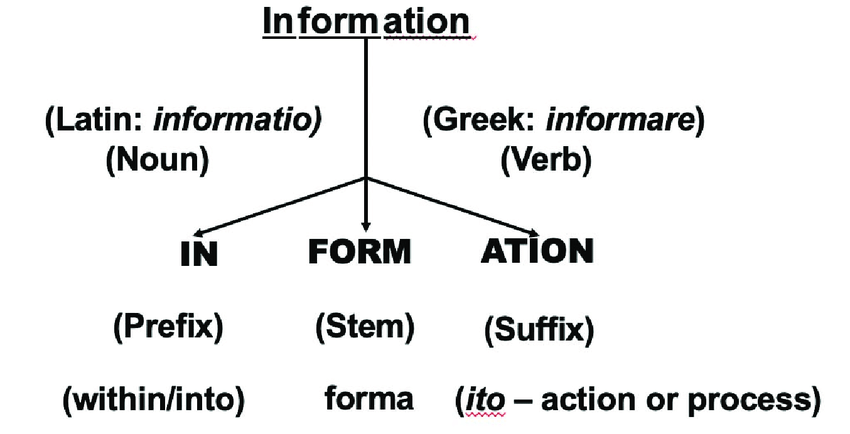
When Information Stopped Informing
The transformation of "information" from its Latin roots to its contemporary usage reflects a broader shift in how we relate to knowledge itself. In classical usage, to inform meant to give shape - like a sculptor giving form to marble or a teacher giving structure to a student's understanding. Information was inherently transformative; it changed the receiver.
This began to shift during the industrial age, when Claude Shannon's mathematical theory of information (1948) redefined information in terms of data transmission efficiency rather than meaning or understanding. Shannon's breakthrough was mathematically profound but philosophically narrow - it could measure how much information was transmitted but not whether that information actually informed anyone. The digital revolution ('information technology') completed this transformation.
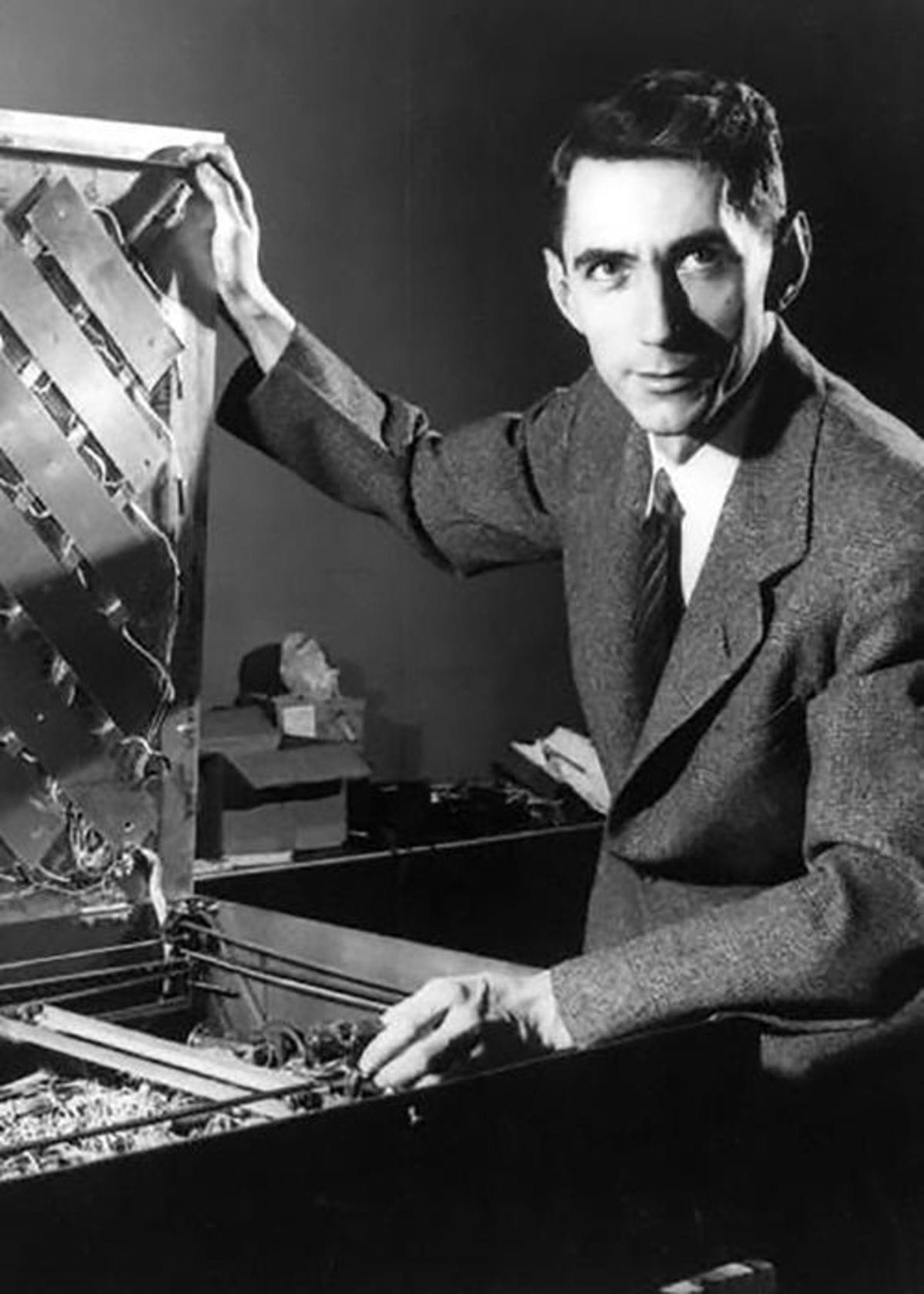
Today, we often use "information" to describe any data that can be stored, transmitted, or processed, regardless of whether it gives form to understanding. We speak of "information overload" - a phrase that would have puzzled classical thinkers, since genuine information creates order rather than chaos.
This semantic drift has practical consequences. When everything becomes "information," we lose vocabulary for distinguishing between data that enhances understanding and data that degrades it. We need more precise language to navigate our current predicament.
Chapter 2: From Switches to Claude - The Binary Foundation
To understand how we arrived at our current information environment, I traced the technological evolution that made it possible. What I discovered was a fascinating progression from the simplest possible decision - on or off - to contemporary LLM systems capable of passing the Turing test.
The Binary Progression: A Technological Genealogy
Light Switches (1879 - Edison): The fundamental insight was that complex control could emerge from simple binary states. Edison's electric light switch introduced millions of people to the power of on/off decisions.

Telegraph Relays (1840s - Morse): Samuel Morse made a crucial intellectual leap - he systematically analyzed the frequency of letters in English text and assigned shorter codes to more common letters. This represents perhaps the first computational analysis of language statistics, remarkably similar to how modern AI systems learn statistical patterns in text. Morse's innovations allowed encoded messages to be passed along long distances through telegraph relay switches.

Vacuum Tubes (1906 - De Forest): These could switch electrical signals on and off thousands of times per second, enabling the first electronic computers. Each tube was essentially a very fast light switch.
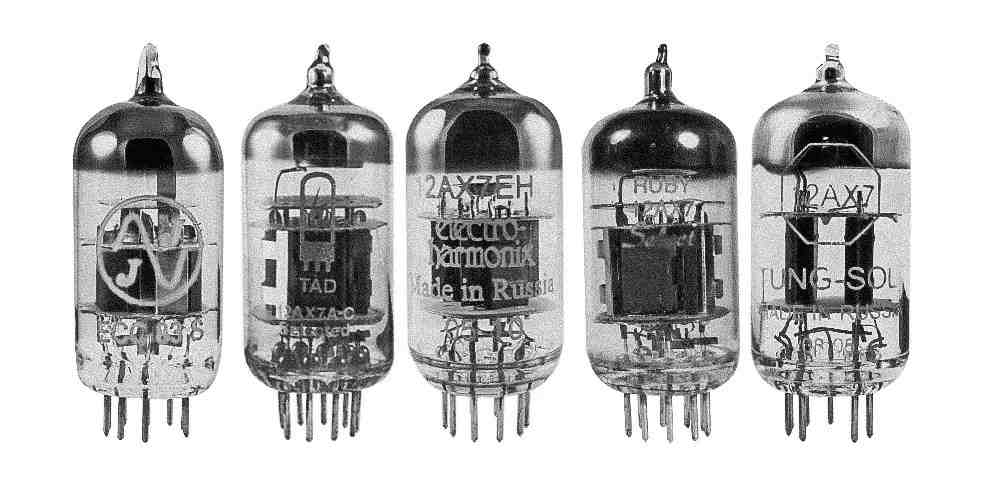
Transistors (1947 - Bardeen, Brattain, Shockley): The breakthrough that made modern computing possible - switches that could operate millions of times per second while consuming minimal power.

Microprocessors (1971 - Intel): Thousands of transistors on a single chip, enabling complex information processing through coordinated switching patterns.

Large Language Models (2017-present): Billions of electronic switches processing statistical patterns in human language, trained on essentially the same approach Morse pioneered - analyzing frequency patterns in human communication. The Morse-AI Connection: Pattern Recognition Across Centuries
The parallel between Morse's telegraph and modern AI systems reveals something profound about information processing. Morse looked at English text and asked: "What are the statistical patterns?" He discovered that 'E' appears far more frequently than 'Z', and designed his code accordingly.
Modern language models ask essentially the same question about vastly larger datasets: "What are the statistical patterns in how humans use language?" They discover that certain word combinations are more probable than others, and generate text accordingly.
Both systems transform human communication into patterns that machines can process. Both rely on statistical analysis of language frequency. Both enable rapid transmission of human ideas across distances - whether physical (telegraph) or temporal (AI systems trained on historical text).
The Substrate Independence Principle
What strikes me most about this progression is how each innovation maintained the same fundamental principle: meaningful information can exist independently of its physical substrate. Whether stored as mechanical relay positions, electrical voltages, or quantum states, the information itself remains constant.
This connects to Max Tegmark's concept of substrate independence - that information patterns can exist across different physical implementations. Shakespeare's Hamlet contains the same information whether stored in a 16th-century manuscript, a modern paperback, computer memory, or even recited from human memory.
This substrate independence has profound implications. At the physical level, computer memory cannot distinguish between: - Scientific research papers and conspiracy theories - Climate data and propaganda - Educational content and disinformation All appear as identical voltage patterns to the underlying hardware. The distinction between valuable and harmful information exists only in the processing systems we design at higher levels.
Chapter 3: Defining the Problem - Disinformation vs. Disformation
My investigation into modern information quality led me to recognize that our current vocabulary is insufficient. We commonly discuss "misinformation" and "disinformation," but these terms don't capture something I was observing in my daily experience with digital media –two Distinct Phenomena.
Disinformation: Data, signals, and content intentionally disseminated to obscure understanding in order to achieve a political or economic goal. This includes propaganda, deliberate lies, and strategic deception. The key characteristic is intentionality - someone deliberately seeks to mislead.
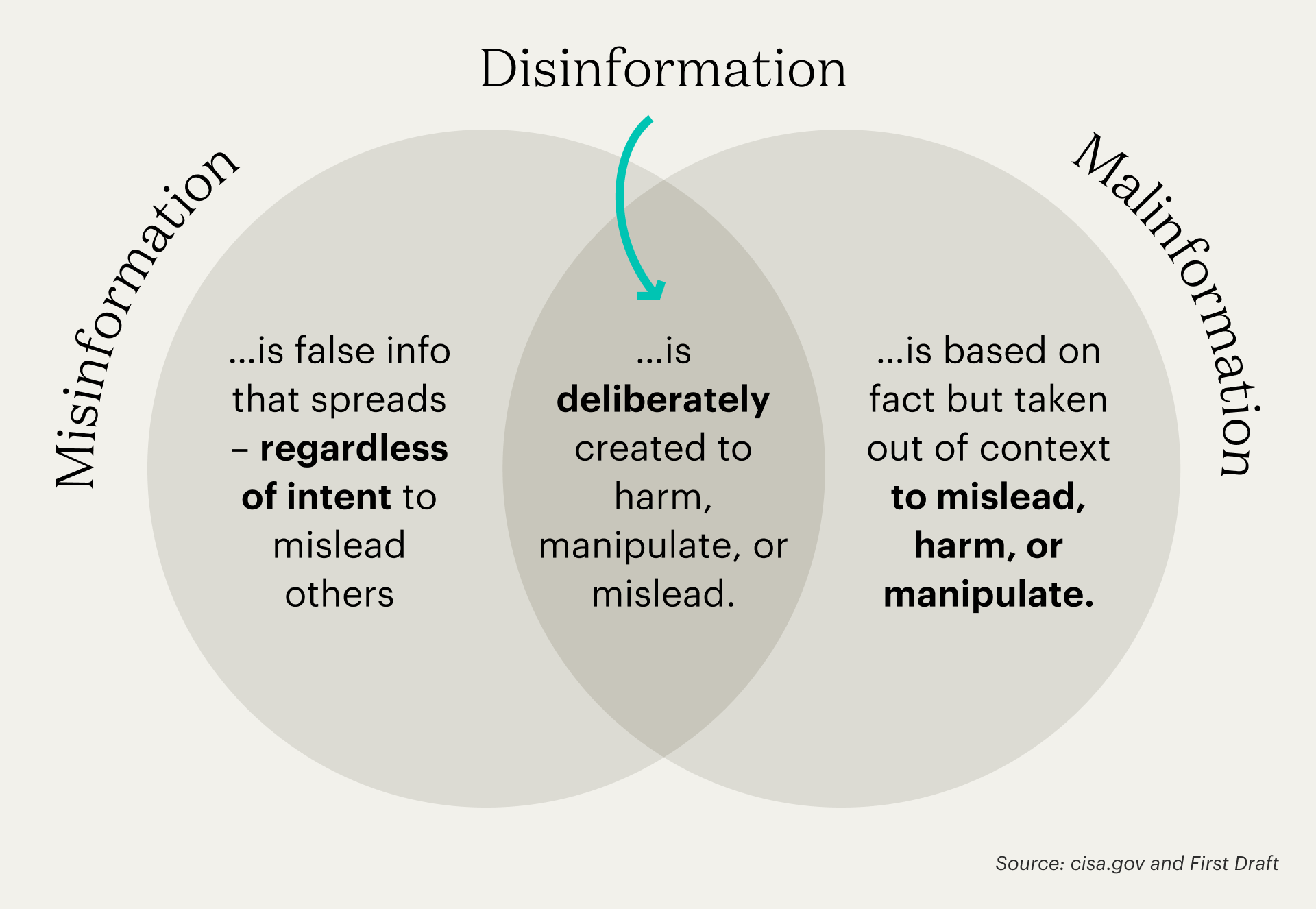
Disformation: Data, signals, and content accidentally generated by human beings with easier broadcasting tools than ever before, which has the effect of degrading understanding even when no deception is intended. This includes well-meaning but inaccurate social media posts, algorithmic amplification of sensational content, and the general noise created when millions of people can publish instantly without traditional editorial filtering.
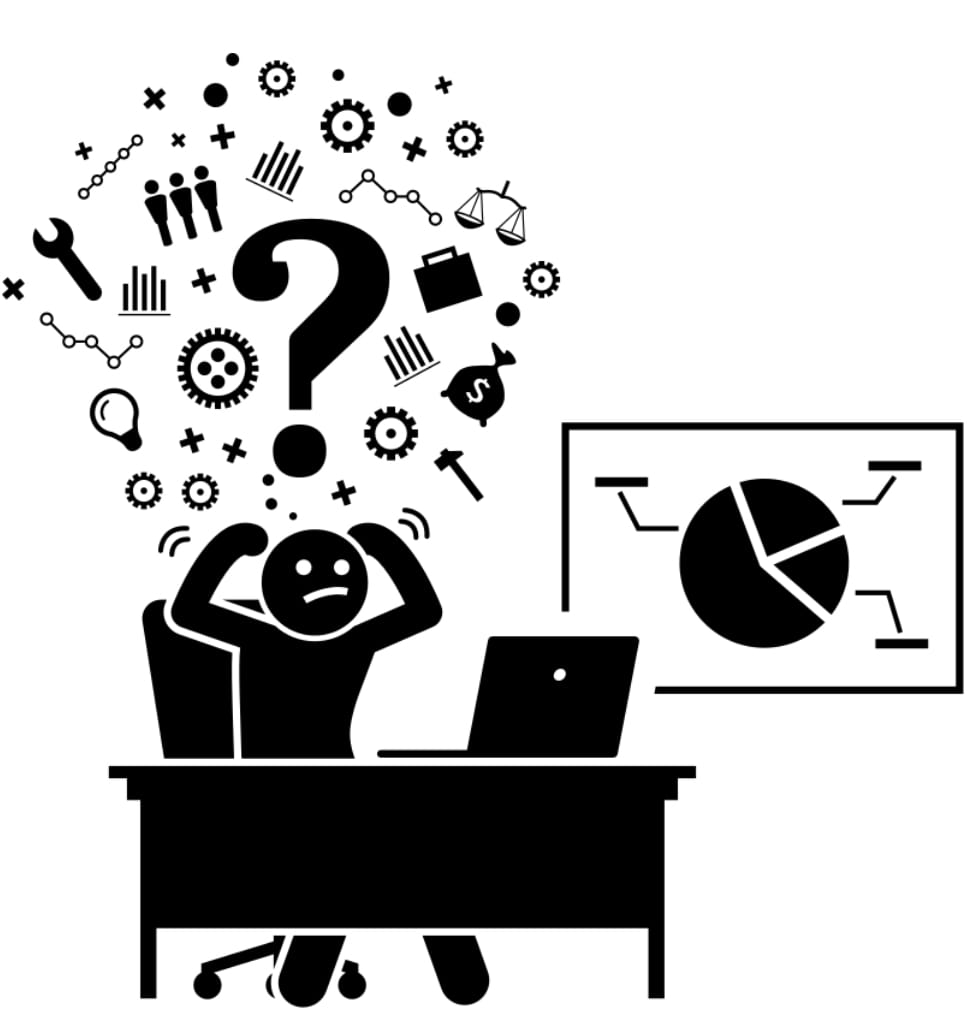
The Disformation Problem
Disformation may be more dangerous than disinformation precisely because it lacks malicious intent. People sharing disformation often believe they're being helpful. They're simply uploading content about the minutiae of their lives; warning friends about false health scares, sharing inspiring but fabricated stories, or amplifying content that "feels" true even when factually incorrect.
The volume of disformation vastly exceeds disinformation. For every professional propagandist, there are thousands of people accidentally spreading confusion through social media. The cumulative effect can be just as damaging to collective understanding, but it's much harder to address because it doesn't involve bad actors who can be identified and stopped.
This distinction helped me realize that technical solutions alone won't solve our information quality problems. We need systems that can distinguish not just between true and false information, but between information that enhances understanding and information that degrades it - regardless of the creator's intent.
Chapter 4: Natural Systems as Information Quality Templates
Searching for frameworks to understand information quality, I discovered that natural systems have been solving similar problems for billions of years. Wong, Cleland, and Hazen's research on "functional information" provided a scientific foundation for understanding how complex systems distinguish valuable from non-valuable configurations.

Understanding Functional Information Through Metaphor
Nature, it seems, is constantly seeking more complexity, by creating novel molecular structures.
The Library Metaphor: Imagine a vast library where books can write themselves. Most randomly generated books would be nonsense - words arranged without meaning, pages of gibberish. But occasionally, a book would emerge that genuinely helped readers understand something important. Functional information is like those rare valuable books that actually serve a purpose, as opposed to the vast majority that would be meaningless noise.
The Tool Metaphor: Consider a workshop where tools can randomly reshape themselves. Most configurations would be useless - a hammer with a blade, a saw with a round edge. But some configurations would be genuinely helpful for accomplishing specific tasks. Functional information works similarly - it's information that enables a system to accomplish specific functions, rather than just taking up space.
The Scientific Foundation
Jack Szostak's foundational work defined functional information as information that enables a system to perform specific functions, measured by comparing all possible sequences that could accomplish equivalent tasks. This provides mathematical precision to intuitive concepts about information quality.
Wong et al.'s universal law extends this beyond biology: "The functional information of a system will increase if many different configurations of the system are subjected to selection for one or more functions." Universal Pattern Recognition
I found that the same pattern appears across multiple domains:
Stars: From hydrogen clouds to complex element synthesis through nuclear fusion. Stars that can sustain fusion long enough to create heavy elements represent higher functional information than those that collapse quickly.
Proteins: From random amino acid sequences to enzymes that catalyze specific reactions with near-perfect efficiency. A typical protein has 20^300 possible configurations, yet only infinitesimal fractions function correctly.
Ecosystems: From simple chemical cycles to complex food webs that efficiently process energy and materials while maintaining stability across environmental changes.
Languages: From basic vocal signals to complex grammar systems that enable precise communication of abstract concepts across cultures and generations.
The common pattern: systems that efficiently process energy, materials, or information while maintaining stability and enabling further complexity development.
Chapter 5: Information Networks and Mental Model Construction - The Harari Integration
Discovery: The shift from organic to inorganic information networks is fundamentally altering human mental model construction in ways we don't yet understand.
During this investigation, I realized that my insights about functional information were resonating with themes I had previously encountered in Yuval Noah Harari's "Nexus: A Brief History of Information Networks from the Stone Age to AI". This unconscious synthesis led me to examine how individual cognition and massive social networks are part of the same fundamental process: the construction of mental models of reality from information inputs.
The Central Question: Mental Model Construction
Every human being contains a mental model of reality constructed from information inputs, but the nature of these inputs and processing mechanisms is undergoing unprecedented transformation. Understanding how we construct accurate mental models when information systems themselves shape what reality looks like may be the core challenge of our time.
Theme 1: From Binary Foundations to Mental Models
How Binary Decisions Scale to Understanding
The progression from simple binary switches to complex cognition mirrors how individual neurons create sophisticated understanding. Just as billions of transistors executing simple on/off decisions enable complex computation, billions of neurons firing or not firing enable human consciousness and reality modeling.
Individual Neural Information Processing: Human neurons operate as biological switches, yet these simple binary decisions, aggregated across billions of neurons, create the capacity for complex reasoning, emotional understanding, and reality modeling that exceeds current AI capabilities.
Collective Mental Model Construction: When individual mental models interact through communication networks, they create collective understanding that can transcend individual cognitive limitations. Scientific communities develop shared models of reality that no individual scientist could construct alone.
The Scaling Paradox: Simple binary foundations can create complex behaviors, but complexity doesn't guarantee accuracy. Both functional and dysfunctional patterns can emerge from identical underlying processes, depending on selection pressures at higher levels.
Digital vs. Biological Processing: While both use binary foundations, biological and digital systems process information differently:
- Biological systems integrate information holistically, connecting new inputs to emotional memories, sensory experiences, and contextual understanding
- Digital systems process information through statistical pattern matching without experiential integration
Theme 2: The Organic to Inorganic Network Transition
Harari's Historical Framework
Drawing from Harari's analysis, human information networks have undergone fundamental transitions that alter mental model construction:
Oral Tradition Era: Mental models constructed through direct human-to-human communication with immediate feedback, stories embedded in cultural contexts, and natural quality control through social consequences.
Written Document Era: Information could persist beyond individual memory, creating standardization across time and space but separating information from original human context.
Print Revolution: Mass production of identical texts enabled simultaneous access to information but also rapid spread of both valuable knowledge and harmful delusions.
Electronic Media Era: Real-time global information sharing with centralized control, passive consumption replacing active seeking, and emotional content becoming primary carriers.
Digital Network Era: Individual publishing capability for billions, algorithmic mediation of information flow, personalized environments, and information abundance exceeding processing capacity.
The Current Transition: Carbon to Silicon
Harari's crucial insight: "The Roman Empire, the Catholic Church and the USSR all relied on carbon-based brains to process information and make decisions. The silicon-based computers that dominate the new information network function in radically different ways... Silicon chips can create spies that never sleep, financiers that never forget and despots that never die."
Carbon-Based Networks (traditional human systems):
- Limited by biological needs (sleep, food, emotional processing time)
- Constrained by memory capacity and recall accuracy
- Subject to aging, death, and generational knowledge transfer
- Influenced by emotions, relationships, and personal stakes
- Capable of wisdom, intuition, and contextual judgment
Silicon-Based Networks (algorithmic systems):
- Operate continuously without biological limitations
- Perfect memory and instant recall of vast databases
- Immortal institutional memory unaffected by mortality
- Processing divorced from personal emotional investment
- Optimize for programmed objectives rather than wisdom
The Unprecedented Challenge: For the first time, information networks shaping mental models are no longer purely human. Algorithms determine what billions encounter, but optimize for engagement rather than understanding, profit rather than truth, efficiency rather than wisdom.
Theme 3: Disformation in Mental Model Construction
The Corruption Process
Disformation operates by corrupting how individuals construct mental models of reality. Understanding this process reveals why disformation is particularly damaging in current information environments.
Healthy Mental Model Construction:
- Information Input: Exposure to diverse, high-quality sources
- Integration: Connecting new information to existing knowledge and experience
- Testing: Comparing mental models against reality through action and feedback
- Updating: Modifying models when evidence contradicts predictions
- Social Calibration: Checking understanding against diverse perspectives
How Disformation Corrupts Each Stage:
Input Corruption: Algorithmic systems flood individuals with engagement-optimized rather than accuracy-optimized information, creating mental models based on emotionally compelling but factually unreliable inputs.
Integration Disruption: Volume and speed of digital information prevents proper integration with existing knowledge, leading to fragmented and contradictory mental models.
Testing Prevention: Digital environments create echo chambers where mental models never get tested against reality or conflicting viewpoints.
Update Resistance: Confirmation bias gets amplified by algorithmic systems providing information confirming existing beliefs while filtering out challenging information.
Social Miscalibration: Filter bubbles mean individuals' mental models get calibrated against others with similar biases rather than diverse perspectives.
The Mythmakers vs. Bureaucrats Tension
Harari identifies a crucial tension: "A difficult dilemma for every human network is that mythmakers and bureaucrats tend to pull in different directions. Institutions and societies are often defined by the balance they manage to find between the conflicting needs of their mythmakers and their bureaucrats."
This tension operates within individual mental model construction:
Internal Mythmakers: The psychological need for inspiring narratives, emotional meaning, and stories that motivate action and provide identity.
Internal Bureaucrats: The need for accurate data, logical consistency, and factual precision for effective decision-making.
Healthy Balance: Functional mental models require both inspirational narratives (for motivation and meaning) and accurate information (for effective action).
Disformation Disruption: Current environments often force choice between inspiring but inaccurate narratives and accurate but demotivating information, preventing integration necessary for both functional understanding and psychological sustainability.
The Truth vs. Order Problem
Harari reveals another fundamental tension: "To survive and flourish, every human information network needs to do two things simultaneously: discover truth and create order... these two processes are often contradictory, because it is frequently easier to maintain order through fictions."
Individual Application: People need mental models that are both accurate enough for effective action and psychologically sustainable enough for mental health. Truth-seeking can be destabilizing; order-maintaining can involve self-deception.
Social Application: Communities need shared mental models enabling cooperation, but these may require simplified or partially fictional narratives to maintain cohesion.
The Modern Challenge: Digital environments often amplify this tension by providing overwhelming disturbing truths alongside compelling but false comforting narratives, making it difficult to construct balanced mental models.
Theme 4: Practical Applications for Mental Model Construction
Living in Digital Bureaucracy
Harari's observation that "humans live in a digital bureaucracy, constantly inhaling and exhaling data" requires new approaches to maintaining human agency:
Conscious Consumption: Deliberately choosing information inputs rather than passively consuming algorithmic feeds.
Data Exhale Awareness: Understanding how our actions create data that feeds back into algorithmic systems and influences others' information environments.
Human-Scale Spaces: Maintaining access to information environments operating at human rather than algorithmic scale and speed.
Personal Information Hygiene: Developing practices for curating information inputs:
- Source Diversification: Seeking information from sources with different perspectives and incentive structures
- Processing Time: Building delays between consumption and belief formation
- Reality Testing: Actively seeking opportunities to test mental models against real-world outcomes
- Binary Clarity Practice: Identifying simple principles underlying complex presentations
- Selection Pressure Design: Choosing sources based on track record for enabling accurate predictions
Educational Design for Mental Model Construction: Educational systems incorporating mental model construction principles:
- Process Education: Teaching how mental models are constructed, not just content
- Information Quality Training: Distinguishing between functional information and disformation
- Cross-Scale Thinking: Showing how principles operate from individual neurons to global networks
- Reality Calibration: Systematic opportunities to test mental models against measurable outcomes
- Historical Pattern Recognition: Using examples to show how information technologies affect mental model construction
Media Literacy for the Algorithmic Age: Traditional media literacy focused on recognizing bias in human-created content. The algorithmic age requires new skills:
- Algorithmic Awareness: Understanding how recommendation systems shape exposure
- Statistical Pattern Recognition: Recognizing content designed to exploit psychological biases
- Source Chain Analysis: Tracing information back to original sources
- Engagement vs. Accuracy Recognition: Distinguishing content designed for engagement from content designed for understanding
Technology Design for Functional Mental Models: Design criteria for information technologies supporting rather than corrupting mental model construction:
- Selection Mechanism Design: Systems rewarding information quality rather than engagement
- Diversity Optimization: Algorithms exposing users to high-quality information from diverse perspectives
- Reality Feedback Loops: Mechanisms for users to track prediction accuracy and adjust sources
- Processing Time Integration: Features encouraging reflection rather than immediate reaction
- Collective Intelligence Amplification: Systems helping groups construct better collective mental models
The Naive View Problem
Harari's analysis of the "naive view" - the belief that "more information inherently leads to truth and wisdom" - directly validates the disformation concept:
- More information ≠ better understanding
- Network processing power ≠ wisdom
- Information abundance can actually decrease functional understanding
- Quality matters more than quantity in mental model construction
Key Insights from Chapter 5:
- Mental Models as Information Systems: Individual cognition and social networks follow similar functional information principles
- Network Transition: The shift from organic to inorganic networks fundamentally alters human mental model construction
- Disformation as Model Corruption: Signals that confuse rather than enable accurate mental models represent the core information quality challenge
- Conscious Design Necessity: Silicon-based systems require deliberate selection mechanisms since they lack biological constraints
- Integration Requirement: Sustainable information systems need both mythmaker (inspirational) and bureaucrat (accurate) functions
- Individual Agency: Understanding mental model construction enables people to take responsibility for their information environment quality
Chapter 6: The Communication Timeline - A Personal Historical Analysis
To understand how we arrived at our current information environment, I examined the evolution of human communication systems over time. What I discovered was a story of gradual loss of natural quality control mechanisms.
Era 1: Verbal-Only Communication (97.5% of human history)
For most of human existence, information transmission was face-to-face and immediate. This created powerful natural selection pressures for information quality:
Immediate Challenge: False or unhelpful information could be questioned immediately by listeners who possessed relevant experience or knowledge.
Social Accountability: Speakers' reputations were directly tied to the quality of information they shared. Consistently providing poor information had immediate social consequences.
Embodied Context: Information was always shared within rich contextual environments that included facial expressions, tone of voice, group dynamics, and immediate situational relevance.
Limited Reach: Information could only spread as far as physical voices could carry and only as fast as people could travel.
The Stories That Survived: Information that "went viral" in oral cultures had to pass rigorous tests of either validity or efficacy. Stories that persisted across generations typically:
- Provided practical survival information: Seasonal patterns, food sources, weather prediction, tool-making techniques
- Enabled successful social coordination: Moral frameworks, conflict resolution methods, leadership principles
- Could be empirically verified: Navigation knowledge, medicinal plant properties, agricultural techniques
- Demonstrated clear cause-and-effect relationships: Hunting strategies, social behaviors that led to positive outcomes
Oral traditions naturally filtered out information that didn't enhance group survival or individual capability. Stories that led to poor outcomes simply didn't get retold, while those that proved useful were refined and preserved across centuries.
Era 2: Written Communication with Barriers (Agricultural societies → 1990s)
The development of writing, and later printing, created the first information systems that could preserve and transmit knowledge across time and distance. However, significant barriers maintained quality control:
Economic Barriers: The cost of paper, ink, printing, and distribution made publishing expensive, which naturally filtered out content that wasn't expected to be valuable enough to justify the investment.
Institutional Gatekeeping: Publishers, editors, libraries, universities, and professional media organizations served as quality filters, applying editorial judgment before information reached broader audiences.
Technical Limitations: The complexity of production and distribution meant that information systems were controlled by people with significant training and institutional support.
The Fallibility of Human Gatekeepers: However, these filtering mechanisms, while effective at maintaining certain quality standards, introduced their own systematic biases. The decision about which oral traditions to record, which scientific observations to preserve, and which ideas to publish was heavily influenced by:
- Cultural prejudices: Information that challenged dominant cultural assumptions was often excluded, regardless of its potential validity
- Economic interests: Wealthy patrons and institutions prioritized information that served their interests, potentially suppressing economically threatening discoveries
- Religious orthodoxy: Theological authorities often prevented preservation of information that contradicted established religious doctrine
- Educational gatekeeping: Academic institutions controlled what constituted "legitimate" knowledge, sometimes rejecting valid but unconventional insights
- Social hierarchies: Information from marginalized groups (women, minorities, lower classes) was systematically undervalued and less likely to be preserved
This meant that while Era 2 systems were effective at filtering out obviously poor-quality information, they also systematically excluded potentially valuable information that threatened existing power structures or challenged conventional wisdom. The quality control mechanisms were functional within their limited scope but often prevented broader functional information from entering the preserved record.
Era 3: Digital Communication without Barriers (1990s → present)
The internet and social media eliminated most traditional barriers to information publication:
Zero Marginal Cost: Publishing became essentially free, removing economic filters that had historically limited low-quality content.
Algorithmic Amplification: Social media algorithms optimize for engagement rather than accuracy, systematically amplifying content that provokes emotional responses regardless of truth value.
Scale Without Oversight: Billions of people can now publish instantly to global audiences without any editorial review or quality control systems.
The Lost Selection Mechanisms
The transition to digital eliminated three crucial information quality mechanisms:
- Economic selection: High-quality information was more likely to justify publication costs
- Professional filtering: Trained editors and institutional review processes caught errors and low-quality content
- Social accountability: Publishers' long-term reputations depended on maintaining quality standards
Current Result: Information systems optimized for viral spread and engagement rather than truth or utility, leading to systematic amplification of sensational but often inaccurate content.
Chapter 7: Cognitive Processing - The McGilchrist Dimension
My exploration of information quality led me to Iain McGilchrist's research on hemispheric brain differences and their implications for how we process information. This provided a framework for understanding why current AI and digital systems might be fundamentally limited in their approach to information quality.
Two Modes of Attention
McGilchrist's work reveals that human brains process information through two distinct but complementary modes:
Left-Hemispheric Processing:
- Narrow, focused attention on specific details
- Analytical and categorical thinking
- Abstract representation and symbol manipulation
- Sequential, linear processing
- Optimized for control and manipulation of known elements
Right-Hemispheric Processing:
- Broad, contextual attention to whole situations
- Holistic and relational understanding
- Direct experience and embodied knowledge
- Parallel, integrative processing
- Optimized for recognizing new patterns and navigating uncertainty
AI Systems as Predominantly Left-Hemispheric
Current AI and digital information systems exhibit overwhelmingly left-hemispheric characteristics. As McGilchrist notes, "AI, like the left hemisphere, has no sense of the bigger picture, of other values, or of the way in which context—or even scale and extent—changes everything". Modern language models like ChatGPT process information through:
- Token manipulation rather than experiential understanding
- Statistical pattern recognition divorced from contextual meaning
- Abstract representation systems separated from embodied experience
- Optimization for efficiency and consistency rather than wisdom or judgment
What's Missing: The Right-Hemispheric Dimension
McGilchrist emphasizes that "the right hemisphere is in touch with experience itself, with the body and deeper emotions, with context and the vast realm of the implicit". Current information systems lack:
Embodied Understanding: The ability to ground abstract information in lived experience and practical consequences.
Contextual Wisdom: Recognition that the same information can have completely different meanings and values depending on situation and relationship.
Implicit Pattern Recognition: The capacity to sense patterns and meanings that cannot be explicitly articulated but are nonetheless crucial for navigation.
Relational Intelligence: Understanding how information affects relationships between people and communities, not just logical consistency.
Implications for Information Quality
This suggests that sustainable information systems might require integration of both processing modes:
Right → Left → Right Processing:
- Right-hemispheric intake: Intuitive assessment of information relevance and contextual appropriateness
- Left-hemispheric processing: Analytical verification and logical integration
- Right-hemispheric integration: Contextual placement and holistic understanding of implications
Current digital systems attempt to skip directly to left-hemispheric processing without the contextual grounding that makes such processing meaningful or wise.
Chapter 8: Contemporary Patterns - Observing Information Ecosystems
Through daily observation of digital information environments, I began to notice distinct patterns in how different systems handle information quality. Some platforms seemed to enhance understanding, while others consistently degraded it.
Functional Information Systems in Practice
Scientific Peer Review: Multiple-stage quality control where research is evaluated for accuracy, significance, and methodological rigor before publication. The Royal Society's peer review process demonstrates how distributed quality control can work effectively.
Wikipedia: Despite initial skepticism, Wikipedia achieved higher accuracy than traditional encyclopedias through crowd-sourced editing with quality control mechanisms including edit histories, citation requirements, administrator oversight, and community consensus.
Stack Overflow: Reputation-based filtering and community moderation create environments where helpful, accurate information rises to prominence while unhelpful or incorrect information is filtered out.
Disformation Systems in Practice
Social Media Engagement Algorithms: Platforms optimizing for engagement over accuracy systematically amplify content that provokes strong emotional responses, regardless of truth value.
Echo Chamber Amplification: Algorithmic systems that reinforce existing beliefs rather than exposing users to information that might challenge or refine their understanding.
Clickbait Economics: Revenue models that reward sensationalism over substance, creating systematic incentives for information that attracts attention rather than enhances understanding. The Selection Mechanism Difference The crucial distinction appears to be whether systems select for information that serves user goals (functional information) or information that serves platform goals (engagement, attention capture, behavioral manipulation). Functional systems ask: "Does this information help users make better decisions, understand situations more clearly, or accomplish their stated goals?" Disformation systems ask: "Does this information capture user attention, generate emotional responses, or increase platform engagement metrics?"
Chapter 9: The Functional Information Principle
My investigation led me to a deeper question: Why do natural systems seem to evolve toward functional complexity while human information systems often evolve toward dysfunction? The answer may lie in how different systems handle functional information selection.
Function-Based Selection in Natural Systems
Drawing from Wong et al.'s research on functional information evolution, I observed that natural systems consistently develop mechanisms that preferentially retain configurations that enhance system function while eliminating those that don't.
Stars develop fusion processes that efficiently convert hydrogen into heavier elements, creating the building blocks for complex chemistry.
Living Systems evolve proteins and metabolic pathways that efficiently convert available resources into survival and reproduction capabilities.
Ecosystems develop food webs and nutrient cycles that efficiently process energy and materials while maintaining stability across environmental changes.
Functional Information in Human Systems
For human information systems, functional information would be information that enhances our individual and collective capability to:
- Make accurate predictions about future events
- Solve practical problems we encounter
- Coordinate beneficial cooperation with others
- Adapt successfully to changing circumstances
- Understand cause-and-effect relationships in our environment
The Selection Mechanism Difference
Natural Systems: Automatically eliminate non-functional configurations through physical laws, chemical stability requirements, and survival pressures.
Current Digital Systems: Often lack equivalent selection mechanisms, instead optimizing for engagement, attention capture, or viral spread regardless of whether information enhances human capability.
Functional Human Information Systems: Would need consciously designed selection mechanisms that preferentially promote information enhancing human decision-making capability while filtering out information that degrades it.
Integrated vs. Externalized Entropy: The "No Waste" Principle
This investigation led me to examine a fundamental principle often attributed to natural systems: "nature creates no waste." How does this relate to functional information, and what distinguishes natural entropy production from human pollution?
The Combinatorial Exploration Framework
When natural systems explore vast possibility spaces - such as the 20^300 possible protein configurations - the overwhelming majority of attempts don't function. They can't fold properly, don't catalyze reactions, or simply don't enhance survival. From one perspective, this appears to represent massive "waste" - billions of years of failed molecular experiments.
But from the functional information perspective, this isn't waste - it's necessary exploration. You cannot find the infinitesimal fraction of configurations that work without testing the vast majority that don't. The entropy produced during this exploration represents the unavoidable cost of the search process itself. The "failed" experiments are integral to discovering the functional ones.
The Integration Principle
Natural systems demonstrate a crucial pattern: entropy produced by one process typically becomes functional input for another process within larger systems:
- Stellar entropy: A star's heat production isn't "waste" - it enables planetary processes, atmospheric dynamics, and ultimately the energy gradients that power life
- Metabolic entropy: An organism's waste products become food, nutrients, or building materials for other organisms
- Ecosystem entropy: Decomposition processes that break down dead organisms create the chemical foundations for new life
The Human Externalization Problem
Human industrial systems often operate differently, producing entropy without corresponding functional information integration:
- Pollution without function: Industrial waste that degrades rather than enhances ecosystem capability
- Short-term gains, long-term costs: Economic systems that create immediate functional information (products, services) while destroying long-term functional information (ecosystem stability, social cohesion)
- Externalized consequences: Costs dumped outside system boundaries rather than integrated into functional cycles
The Sustainability Connection
This suggests a criterion for evaluating human systems: Do they produce entropy that serves functional purposes within larger cycles (integrated entropy), or do they externalize entropy without functional integration?
Integrated entropy in human systems might include:
- Industrial processes where waste from one stage becomes input for another
- Economic systems where all costs are accurately reflected in prices
- Information systems where correction of errors strengthens overall knowledge quality
Externalized entropy might include:
- Pollution that degrades rather than enhances environmental function
- Economic systems that externalize social and environmental costs
- Information systems that amplify confusion without enhancing understanding
Chapter 10: Historical Case Studies - Testing the Framework
To test whether these patterns hold across different historical contexts, I examined several major transitions in human information systems.
Case Study 1: The Printing Press Transition (1450-1650)
Challenge: The printing press created sudden information abundance without established quality controls, leading to widespread distribution of both valuable knowledge and harmful misinformation.
System Response: European society gradually developed new quality control mechanisms:
- Scientific method and peer review for evaluating empirical claims
- University systems for training and credentialing knowledge experts
- Publishing industry standards for editorial review
- Legal frameworks distinguishing legitimate from fraudulent information
Outcome: After initial chaos, these new selection mechanisms enabled the Scientific Revolution and Enlightenment - periods of unprecedented advancement in human understanding.
Lessons:
- Information abundance without quality control initially creates chaos
- Societies can develop new selection mechanisms, but this requires conscious effort and institutional investment
- Effective solutions typically combine multiple complementary approaches rather than relying on single mechanisms
Case Study 2: Radio Propaganda Era (1920-1950)
Challenge: Radio enabled unprecedented mass communication, making it possible for single sources to reach millions of listeners simultaneously, creating new opportunities for both education and manipulation.
Varied Responses: Different societies developed different approaches:
- Democratic societies: Professional journalism standards, media literacy education, regulatory frameworks requiring fairness and accuracy
- Authoritarian societies: State control of media for propaganda purposes, suppression of alternative information sources
- Commercial systems: Advertising-supported media with mixed incentives
Outcomes: Radio demonstrated that mass communication technology amplifies existing social and political tendencies rather than determining them. Societies with strong democratic institutions generally developed more functional information systems, while societies with weak institutions often experienced information degradation.
Lessons:
- Technology is not inherently functional or dysfunctional - outcomes depend on institutional responses
- Multiple models can emerge simultaneously, with different long-term sustainability characteristics
- Commercial incentives alone are insufficient to maintain information quality
Case Study 3: Wikipedia's Emergence (2001-present)
Innovation: Wikipedia represented a completely new approach to information quality - distributed editing by volunteers with transparent quality control mechanisms.
Selection Mechanisms:
- Edit histories allowing review of all changes
- Citation requirements linking claims to external sources
- Administrator oversight and community consensus processes
- Graduated response systems for addressing quality problems
Results: Wikipedia achieved higher accuracy than traditional encyclopedias for many topics, while covering vastly more subjects and updating more rapidly.
Lessons:
- Crowd-sourced quality control can work when properly designed
- Transparency and reversibility are crucial for distributed systems
- Success requires both technical mechanisms and social norms
Chapter 11: Protein Wisdom - Nature's Functional Information Paradigm
To better understand functional information, I studied biological systems where billions of years of evolution have solved information quality problems. Proteins emerged as perhaps the most sophisticated example of functional information in nature.
The Astronomical Precision of Proteins
Consider the challenge proteins solve: A typical protein sequence has 20^300 possible combinations—vastly more than the number of atoms in the observable universe. Yet among these astronomical possibilities, only infinitesimal fractions fold correctly and perform useful functions.
This is equivalent to finding meaningful sentences by randomly arranging letters, except the search space is incomparably larger and the criteria for "meaningful" are far more stringent. Enzymes must process millions of reactions per second with near-perfect accuracy, exceeding the precision of any human-designed machinery.
Self-Assembly and Information Density
What's remarkable is that proteins automatically fold into precisely functional 3D shapes from linear information sequences. The folding instructions are encoded in the sequence itself—no external assembly machinery required.
Each functional protein contains more tested functional information than most human technologies, representing millions of years of evolutionary testing and refinement.
The Bootstrap Problem and Natural Solutions
How did natural systems transition from simple chemistry to protein-level sophistication? This "bootstrap problem" parallels challenges in building functional information systems:
Gradual Accumulation: Simple functional molecules provided scaffolding for more complex systems, which enabled even greater complexity in successive generations.
Environmental Selection: Only configurations that enhanced survival and reproduction were retained, while non-functional variants were eliminated.
Redundancy and Error Correction: Multiple mechanisms ensured information fidelity across reproduction cycles.
Network Effects: Functional molecules worked together, creating collective capabilities greater than individual components.
Implications for Human Information Systems
Protein evolution suggests several principles for designing functional information systems:
- Function Over Form: Selection pressure should focus on whether information enhances system capability rather than whether it appears impressive.
- Gradual Refinement: Functional information systems require extended development and testing periods.
- Error Elimination: Mechanisms for identifying and removing non-functional information are as important as mechanisms for generating new information.
- Network Integration: Individual pieces of information should enhance rather than conflict with existing knowledge.
Chapter 12: Societies as Information Networks - Power, Truth, and Order
Building on Harari's central thesis in "Nexus", my investigation led me to examine societies not as collections of individuals sharing beliefs, but as information networks - complex systems for collecting, processing, storing, and distributing information to enable large-scale human cooperation.
Information Networks: The Foundation of Human Power
Harari's crucial insight: "Information is the glue that holds networks together." Human societies gain enormous power by building large networks of cooperation, but these networks depend entirely on information flow between members. Unlike other species that cooperate in small groups through direct relationships, humans cooperate in millions through shared information systems.
As Harari observes: "Humankind gains enormous power by building large networks of cooperation, but the way these networks are built predisposes us to use that power unwisely." The key to understanding this paradox lies in how information networks balance two essential but often contradictory functions.
The Fundamental Tension: Truth vs. Order
Every human information network faces what Harari identifies as the central dilemma: "To survive and flourish, every human information network needs to do two things simultaneously: discover truth and create order." Yet these processes often conflict because, as he notes, "it is frequently easier to maintain order through fictions."
Truth-Seeking Function:
- Accurate information about reality enables effective problem-solving
- Scientific methods, empirical testing, and error correction
- Adaptation to changing circumstances through learning
- Examples: Medical research, engineering, agricultural science
Order-Creating Function:
- Shared narratives enable coordination among strangers
- Common beliefs motivate collective action
- Social cohesion through shared identity and purpose
- Examples: National myths, religious traditions, legal systems
The Selection Mechanism Problem
Drawing from the functional information framework, information networks require selection mechanisms to determine which information gets preserved, amplified, or eliminated. Harari reveals how different types of networks develop different selection criteria:
Democratic Information Networks:
- Multiple competing sources of information
- Self-correcting mechanisms through open debate and institutional checks
- Selection pressure favoring information that enables effective collective decision-making
- Transparency allowing citizens to evaluate information quality
Authoritarian Information Networks:
- Centralized control of information flow
- Selection pressure favoring information that maintains existing power structures
- Suppression of information that might challenge authority
- Order prioritized over truth when they conflict
Commercial Information Networks:
- Selection pressure based on profit and engagement
- Information that generates revenue gets amplified regardless of truth value
- Algorithmic systems optimizing for attention rather than understanding
- Market incentives that may conflict with both truth and social order
The Mythmaker-Bureaucrat Dynamic in Information Networks
Harari identifies a crucial structural tension: "A difficult dilemma for every human network is that mythmakers and bureaucrats tend to pull in different directions." This tension manifests in how information networks handle different types of information:
Mythmaker Information:
- Inspiring narratives that motivate action and provide meaning
- Stories that create emotional connection and group identity
- Information designed to mobilize and coordinate collective behavior
- Often simplified or dramatized to maximize motivational impact
Bureaucratic Information:
- Accurate data needed for practical decision-making and administration
- Detailed records, measurements, and systematic analysis
- Information designed to enable efficient coordination and resource allocation
- Often complex and dry but essential for system functioning
Functional information networks require both types, but balancing them requires conscious design. As Harari notes: "Institutions and societies are often defined by the balance they manage to find between the conflicting needs of their mythmakers and their bureaucrats."
Historical Examples: Information Network Evolution
The Roman Empire succeeded by developing sophisticated bureaucratic information systems (census data, legal codes, administrative records) while maintaining mythological narratives (divine emperors, Roman destiny) that motivated cooperation across diverse populations.
Medieval Christianity created Europe's largest information network through a combination of inspirational mythologies (salvation narratives, moral frameworks) and bureaucratic systems (written law, institutional hierarchies, record-keeping).
The Soviet Union demonstrated how information networks can become dysfunctional when order is prioritized over truth. As Harari documents, Soviet bureaucracy created massive information distortion that ultimately made the system unable to adapt to reality.
Modern Digital Networks represent an unprecedented experiment in information network design, where algorithmic rather than human selection mechanisms determine information flow for billions of people.
Power Dynamics and Information Flow
Harari's analysis reveals how power structures shape information networks in ways that often conflict with functional information principles:
Information Asymmetries:
- Those who control information networks gain disproportionate power
- "Knowledge is power" - but so is controlling what others know
- Digital platforms now control information flow for billions without democratic oversight
Self-Reinforcing Systems:
- Power structures create information environments that justify their continued existence
- Echo chambers prevent challenging information from reaching decision-makers
- Systems become unable to self-correct when they filter out disconfirming evidence
The Externalization Problem:
- Information networks often externalize the costs of their dysfunction
- Social media platforms profit from engagement while society bears the cost of misinformation
- Political systems may maintain power through propaganda while citizens suffer the consequences of poor decision-making
Network Failure Modes
Harari's framework helps identify how information networks fail:
Order Without Truth:
- Information networks that prioritize maintaining existing arrangements over adapting to reality
- Eventually collapse when accumulated falsehoods make effective functioning impossible
- Examples: Soviet planning systems, financial bubbles, climate change denial
Truth Without Order:
- Information systems that provide accurate information but fail to enable coordinated action
- Can lead to paralysis, fragmentation, or conflict despite good information
- Examples: Academic debates without policy implementation, information overload without synthesis
Neither Truth nor Order:
- Information networks that serve only the interests of network controllers
- Provide neither accurate information nor social coordination
- Examples: Purely extractive media systems, propaganda without functional governance
Designing Functional Information Networks
The investigation suggests principles for designing information networks that balance truth and order while serving human flourishing:
Distributed Selection Mechanisms:
- Multiple independent sources applying different quality criteria
- Peer review, investigative journalism, competitive analysis
- No single point of control over information selection
Transparency and Accountability:
- Information sources clearly identified with track records visible
- Open data, source documentation, correction mechanisms
- Decision-makers accountable for information quality they use or promote
Context Preservation:
- Information maintains connection to its sources, limitations, and appropriate uses
- Provenance tracking, uncertainty quantification, scope specification
- Users understand not just what information says but why it was created
Reality Testing:
- Regular comparison of network beliefs against measurable outcomes
- Prediction markets, experimental validation, outcome tracking
- Institutional mechanisms for updating beliefs when reality conflicts with network narratives
The Democratic Information Challenge
Harari emphasizes that democratic societies face a particular challenge: they require both informed citizens capable of making good collective decisions and social cohesion sufficient to implement those decisions cooperatively.
This creates what might be called the "democratic information paradox": citizens need access to complete, accurate information to make good decisions, but too much challenging or disturbing information can undermine the social solidarity necessary for democratic cooperation.
Functional democratic information networks must somehow provide both accurate information and social cohesion without sacrificing either truth or order. This may require conscious design rather than relying on market mechanisms or algorithmic optimization.
Contemporary Applications
Climate Change Information Networks: The climate challenge exemplifies the truth-vs-order tension. Climate science provides clear information about necessary changes, but implementing those changes requires unprecedented global cooperation. Information networks must somehow convey both the urgency of the science and maintain hope sufficient to motivate action.
Pandemic Response Information Networks: COVID-19 revealed how quickly information networks can become dysfunctional when scientific uncertainty, political pressures, and social media dynamics interact. Different societies developed different approaches to balancing public health information with social order.
Democratic Institutional Design: Contemporary debates about "misinformation" and "disinformation" often miss Harari's deeper point: the problem isn't just false information, but information networks designed around wrong selection criteria. Functional democracy requires information networks optimized for citizen decision-making rather than engagement, profit, or political advantage.
Key Insights from Chapter 12:
- Societies are Information Networks: Understanding social dysfunction requires analyzing information flow and selection mechanisms rather than just individual beliefs or behaviors.
- Truth-Order Tension is Universal: All information networks must balance accurate information with social coordination, and this tension cannot be permanently resolved.
- Selection Mechanisms Determine Outcomes: The criteria used to select, amplify, or suppress information shape network behavior more than individual node characteristics.
- Power Shapes Information Flow: Those who control information networks gain power, creating incentives to optimize networks for power maintenance rather than truth or social function.
- Conscious Design is Required: Functional information networks require deliberate design of selection mechanisms rather than relying on emergent properties or market forces.
- Democratic Networks Face Unique Challenges: Balancing informed citizenship with social cohesion requires information network design principles specifically adapted to democratic governance.
Chapter 13: Practical Applications and Design Principles
Based on this investigation, what would information systems designed around functional information principles actually look like? Here are some practical implications I've derived:
Information System Design Principles
1. Optimize for User Goals, Not Platform Goals
- Systems should enhance users' ability to accomplish their stated objectives rather than maximizing engagement metrics
- Success measurements should focus on decision quality and outcome improvement rather than time spent or content consumed
2. Preserve Context and Provenance
- Information should maintain connections to its source, creation circumstances, and relevant background
- Users should be able to trace information back to its origins and understand its limitations
3. Enable Multiple Perspectives
- Systems should expose users to diverse viewpoints and information sources rather than creating echo chambers
- Algorithmic recommendations should balance relevance with diversity
4. Implement Quality Selection Mechanisms
- Develop measurable criteria for information functional value
- Create feedback loops that reward information creators for producing genuinely helpful content
- Establish correction mechanisms for identifying and addressing poor-quality information
5. Support Both Analytical and Intuitive Processing
- Interfaces should accommodate both focused analysis and holistic pattern recognition
- Information presentation should engage both explicit reasoning and implicit understanding
Educational Applications
Information Literacy Curriculum:
- Teaching recognition of functional vs. non-functional information
- Developing both analytical and intuitive evaluation capabilities
- Understanding how information quality affects individual and collective decision-making
- Recognizing the difference between engagement and understanding
Systems Thinking Integration:
- Connecting information principles across multiple domains (biological, technological, social)
- Using historical case studies to understand how information systems evolve
- Exploring relationships between information quality and system sustainability Institutional Improvements Democratic Institutions:
- Public information systems that prioritize citizen understanding over political messaging
- Transparent decision-making processes that enable quality feedback from affected communities
- Education systems that develop citizens' capacity for critical evaluation of complex information Economic Systems:
- Market mechanisms that internalize true costs rather than externalizing them
- Information systems that make long-term consequences visible in short-term decisions
- Regulatory frameworks based on functional information principles rather than captured interests
Chapter 14: Limitations and Humility
This investigation represents one person's attempt to make sense of contemporary experience through systematic inquiry. I want to be explicit about its limitations and appropriate scope.
Methodological Limitations
Cross-Domain Metaphor Application: Biological metaphors may not apply accurately to social systems in all contexts. Social systems involve conscious choice and cultural values in ways that physical systems do not.
Cultural Specificity: What constitutes "functional" information may be culturally relative in ways that biological function is not. Different communities may legitimately disagree about information value and quality criteria.
Observer Bias: My analysis is inevitably shaped by my particular perspective, cultural background, and personal experiences. Others conducting similar investigations might reach different conclusions.
Complexity and Emergence: Higher-level system behaviors may not follow lower-level patterns. Social and cultural phenomena often exhibit emergent properties that cannot be predicted from individual components.
Scope and Applicability Boundaries
Where This Framework May Apply Well:
- Information systems with measurable performance outcomes
- Historical analysis of communication technology transitions
- Design principles for platforms with explicit educational or informational purposes
- Individual decision-making about information consumption and sharing
Where This Framework May Break Down:
- Highly subjective or aesthetic information domains where personal taste legitimately varies
- Situations requiring rapid response without full information processing
- Systems where cultural or social values should override pure functional efficiency
- Individual psychological needs that may conflict with collective optimization
Appropriate Humility
This Investigation:
- Offers one lens among many for understanding information quality challenges
- Requires extensive testing and refinement before practical application
- Should be considered hypothesis-generating rather than definitive
- Must be adapted to specific contexts rather than applied universally
Cross-Domain Applications:
- Should be treated as suggestive patterns rather than established laws
- Require empirical validation in each specific domain before implementation
- Must account for local conditions, cultural values, and particular use cases
- Should inspire further investigation rather than immediate conclusions
Questions Requiring Further Investigation
Empirical Validation:
- Can the proposed metrics for functional information be reliably measured across different contexts?
- Do information systems with better selection mechanisms demonstrate measurably better performance outcomes?
- What historical examples provide the strongest tests of this framework's predictive power?
Practical Implementation:
- How can existing platforms be modified to incorporate functional information principles without destroying their economic viability?
- What educational interventions based on this framework actually improve information literacy?
- How do we resolve tensions between individual and collective information needs?
Theoretical Development:
- How should legitimate cultural disagreement about information value be incorporated into system design?
- What role should democratic input play in defining "functional" information criteria?
- How do we account for the fact that different communities may need different information systems?
Conclusion: One Person's Pattern Recognition This investigation emerged from my attempt to understand why navigating information feels increasingly difficult despite having access to more knowledge than any previous generation. Through systematic exploration across multiple disciplines, I discovered patterns that suggest our current challenges may be understandable and potentially addressable. Key Insights from This Investigation
Natural Systems Provide Templates: Billions of years of evolution have solved information quality problems through selection mechanisms that preferentially retain functional configurations while eliminating non-functional ones.
Current Digital Systems Lack Crucial Selection Pressures: The transition to digital communication eliminated historical quality filters (economic barriers, professional gatekeeping, immediate social accountability) without replacing them with equivalent mechanisms.
The Organic-to-Inorganic Transition: The shift from carbon-based to silicon-based information networks represents an unprecedented challenge in human history, fundamentally altering how mental models of reality are constructed.
Conscious Design is Required: Unlike natural systems where selection pressures emerge automatically, human information systems require deliberate design of quality control mechanisms that serve human rather than algorithmic goals.
Mental Model Construction is Central: Understanding how individuals and communities construct mental models of reality from information inputs may be the key to addressing modern information quality challenges.
Both Analytical and Intuitive Processing Are Necessary: Sustainable information ecosystems likely require integration of left-hemispheric analytical capabilities with right-hemispheric contextual understanding.
Cross-Disciplinary Integration Reveals Hidden Patterns: Systematic exploration across domains can illuminate aspects of contemporary experience that remain invisible from single-discipline perspectives. Personal Reflections This investigation changed how I relate to information in daily life. I find myself asking different questions: - Does this information enhance my ability to understand or act effectively? - What selection pressures shaped how this information reached me? - Am I consuming information that serves my goals or someone else's? - How can I contribute to information systems that enhance rather than degrade collective understanding? - What mental model of reality am I constructing, and how accurate is it? The framework also made me more optimistic about addressing information quality challenges. While our current situation often feels overwhelming, historical analysis suggests that societies can develop new selection mechanisms when existing ones become inadequate. The printing press initially created chaos, but ultimately enabled the Scientific Revolution. Radio was used for both propaganda and education. Digital technologies might follow similar patterns if we consciously design appropriate institutions. The Harari integration deepened this optimism by showing that information quality challenges are not unprecedented. Humans have successfully navigated major transitions in information networks before, though each transition requires developing new institutions and selection mechanisms appropriate to the new technology. Invitation for Others I offer this investigation not as definitive answers, but as one attempt to find patterns that might be useful for others facing similar questions. The methodology - systematic integration across disciplines through pattern recognition and careful attention to limitations - might be applicable to other contemporary challenges. Different people will likely reach different conclusions, and this diversity of perspective is itself valuable. Information ecosystems benefit from multiple approaches to quality evaluation rather than single authoritative sources. Final Perspective The universe appears to naturally evolve toward functional information through built-in selection mechanisms. Human information systems have temporarily disrupted these mechanisms but retain the capacity to consciously restore them through informed design. The transition from organic to inorganic information networks may be the most significant challenge facing human civilization, but it also represents an opportunity to consciously design information systems that serve human flourishing rather than just efficiency or engagement. Whether these specific insights prove broadly valid remains an open question. The investigation's primary value may lie in demonstrating that contemporary human experience, while often confusing and overwhelming, might be comprehensible through patient, systematic inquiry that respects both scientific rigor and the irreducible complexity of human consciousness and choice. The patterns I've identified suggest that distinguishing valuable information from its counterfeits - whether in Mumbai traffic or global media - may be one of the most crucial skills for navigating the 21st century. But like any skill, it can be developed through practice, reflection, and shared learning. The ultimate contribution of this investigation may be leaving readers with the ability to see reality a bit more clearly, now that they can distinguish between real information and its close imitators. In an age where the construction of mental models is increasingly mediated by non-human systems, conscious understanding of these processes becomes essential for maintaining human agency and wisdom. I hope others find value in this exploration, whether as confirmation of their own observations, as starting points for different investigations, or as examples of approaches that require significant modification. The goal is not agreement, but enhanced capability for collective sense-making in an age when such capability feels both more necessary and more difficult than ever.
Document prepared as a record of personal philosophical investigation, shared in the hope that others might find it useful for their own explorations of information, understanding, and wisdom in contemporary life. Enhanced Version 3.0 - Philosophical Investigation Framework with Historical Network Analysis
References and Additional Sources
Core Scientific Framework
- Wong, M. L., Cleland, C. E., Arend, D., Bartlett, S., Cleaves, H. J., Demarest, H., ... & Hazen, R. M. (2023). On the roles of function and selection in evolving systems. Proceedings of the National Academy of Sciences, 120(43), e2310223120.
- Szostak, J. W. (2003). Functional information: Molecular messages. Nature, 423(6941), 689.
Historical Network Analysis
- Harari, Y. N. (2024). Nexus: A Brief History of Information Networks from the Stone Age to AI. Random House.
Information Theory and Communication History
- Shannon, C. E. (1948). A mathematical theory of communication. Bell System Technical Journal, 27(3), 379-423.
- Smithsonian Institution. Samuel Morse Telegraph Collection.
- Computer History Museum. The Transistor.
McGilchrist and Hemispheric Theory
- McGilchrist, I. (2019). The Master and His Emissary: The Divided Brain and the Making of the Western World. Yale University Press.
- McGilchrist, I. (2021). The Matter With Things: Our Brains, Our Delusions and the Unmaking of the World. Perspectiva Press.
- Mind Matters. (2019). Is AI the Triumph of Left-Brained Thinking? What Follows?
Information Quality and Digital Communication
- Vosoughi, S., Roy, D., & Aral, S. (2018). The spread of true and false news online. Science, 359(6380), 1146-1151.
- Lazer, D. M., Baum, M. A., Benkler, Y., Berinsky, A. J., Greenhill, K. M., Menczer, F., ... & Schudson, M. (2018). The science of fake news. Science, 359(6380), 1094-1096.
- Giles, J. (2005). Internet encyclopaedias go head to head. Nature, 438(7070), 900-901.
Complexity Theory and Thermodynamics
- Prigogine, I. (1977). Self-Organization in Nonequilibrium Systems. Nobel Prize Lecture.
- England, J. L. (2013). Statistical physics of self-replication. The Journal of Chemical Physics, 139(12), 121923.
- Quanta Magazine. A New Thermodynamics Theory of the Origin of Life.
Historical Communication and Media Studies
- Eisenstein, E. L. (2005). The Printing Press as an Agent of Change. Cambridge University Press.
- Columbia Journalism School. History and Mission.
Philosophy and Social Systems
- Harari, Y. N. (2016). Homo Deus: A Brief History of Tomorrow. Harper.
- Stanford Encyclopedia of Philosophy. Scientific Method.
- Tegmark, M. (2014). Our Mathematical Universe: My Quest for the Ultimate Nature of Reality. Knopf.
Protein Science and Functional Information
- Dill, K. A., & MacCallum, J. L. (2012). The protein-folding problem, 50 years on. Science, 338(6110), 1042-1046.
- Bar-Even, A., Noor, E., Savir, Y., Liebermeister, W., Davidi, D., Tawfik, D. S., & Milo, R. (2011). The moderately efficient enzyme: evolutionary and physicochemical trends shaping enzyme parameters. Nature Chemical Biology, 7(8), 552-558.
Platform Studies and Information Systems
- Stack Overflow. Theory of Moderation Revisited.
- Royal Society. Peer Review Guidelines.
